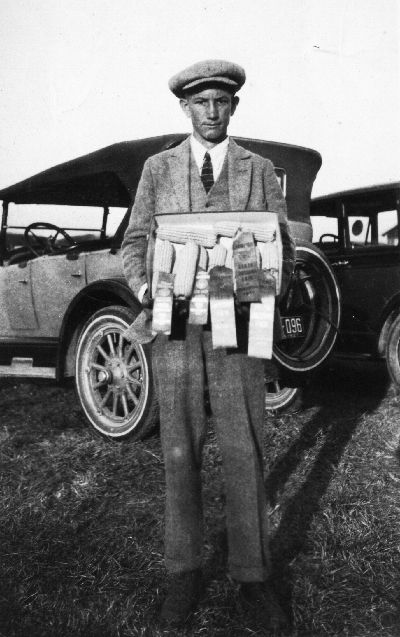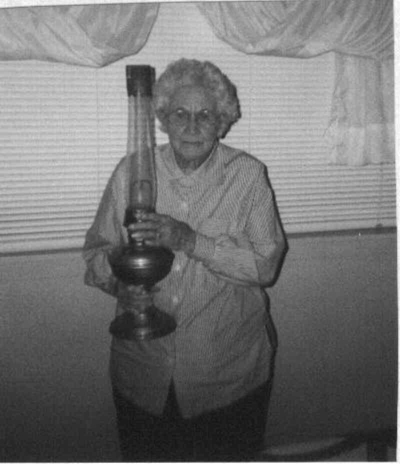Community
Growing up in Baywood in the 1910’s, 20’s, and 30’s, Part 2
Submitted by Sylvia Kelly Smith with the help from family members
Sam had owned the home and land that they lived on there on the Greenwell Springs Road. The family had been farming the land and growing crops to sell when he was alive. Lillie Mae saw to it that his plans were continued. Even the young children were in the fields and on the farm working full days.
These chores were done out of necessity with no modern day tools to help them. Some of the chores done by this and other families included: milking the cows by lantern (because this was done before daylight); feeding horses, pigs, cows, and chickens before daylight; working in the fields from daylight until dark, while there was some light; milking and feeding stock after sundown; cutting and packing wood after sundown (for stoves, fireplaces, etc.); canning vegetables and fruits for future meals; and cooking three meals a day.
This doesn’t mean that the kids didn’t go to school. Those who got to go, had to start their farm work as soon as they got home.
With determination and lots of hard work, the Smith family managed to survive, although times were really hard at times. What we now refer to as “truck farming” seems to have been what pulled them through. Through the years, the boys often sold their produce in Baton Rouge and elsewhere. Although she knew she had to help, Sis was always scared as she helped to pick beans, strawberries, and the like. She just knew she would put her hand on a snake!
Even as early as age 13, L.D. often took their fruits and vegetables to Baton Rouge to sell. Those dirt roads of that day could really be hard to travel if the weather had been rainy. Sometimes L.D. might not get home for two or three days. When Sam was old enough, he also made these selling trips. At times, a wagon or a carriage was used to take the crops to Baton Rouge. Later, when they were lucky, they had a truck to use.
The boys also made sure to enter their produce in various parish fairs. A photo shows one of the actual ribbons which Sam and L.D. won on produce at the South Louisiana Fair at Donaldsonville, LA, in 1927.
In another photograph, a young Sam Smith is shown with some of the corn they entered in the Donaldsonville Fair, along with several of the prize ribbons they won.
Sam Smith, with the prize ribbons: Photo was likely taken at the Fair.
They received prize money for their winnings. This money was used wisely in order to help provide for their fatherless family. The boys used this money to buy items which the family needed. A first-place ribbon, of course, brought more prize money, so it was well worth winning!
Once L.D. and Sam made enough money from their high placings in the Donaldsonville Fair that they were able to buy a new lamp and a 16-guage shotgun for use at home. The lamp was a Godsend at home because it gave off so much more light than the old coal-oil lamps they had. Of course, this was before the days of electricity. Being able to come in from working the fields late in the evening to do homework wasn’t nearly such a chore with the new lamp.
L.D.’s wife, Oggie, in 2003 with the Aladdin’s lamp they bought
That lamp certainly helped with late evening homework for the kids who were in school.
At some point during the family’s struggles, Lillie Mae also worked at the mental hospital in Jackson. That was quite a trek in those days!
Life was definitely not all work and no play. It seems that the Smith boys could be a bit of a handful at times with their mischievous ways. One of L.D.’s sons has the shotgun that was bought with the fair winnings. He remembers the story of Uncle Tommie using it and sticking it in mud and shooting it and blowing the end off of it. L.D. had to cut 6 inches off of it.
One of L.D.’s daughters remembers a story that Grandma Lillie Mae loved to tell on L.D. She had just bought a new foot tub and L.D. got the hatchet and chopped holes in the bottom. Then he told Grandma that the dogs’ tails made the holes as they beat their tails against the bucket.
Another story that Grandma Lillie Mae told on L.D. was that he got a long board and got some corn and placed a small stick under one end of the board lifting it off the ground, placing the corn under along the board. Of course you know what happened after that: the chickens went after the corn to eat, knocked the stick from under the end, and the big board fell on the chickens heads and killed a bunch of them. According to L.D.’s daughter today, “he must have been a ring-tail-tooter.” After he grew up and married, he sure expected his kids to be saints. (Of course, I failed the test,” says that daughter).
One of Sis’s daughters said that the boys used to back the mule up to the window and cut his tail. The boys also liked to torment their little sister. They would get out the Farmer’s Almanac and tell her that a big storm was going to hit the Smith house. Sis was afraid of bad weather her entire life!
Like many homes of that era, the Smith home had no indoor bathroom and no electricity. The fireplace and the kitchen stove provided the only heat in Lillie Mae’s house. She always wore a coat inside the house if it was cold. Coal-oil lamps provided light. Wooden plank floors were in the entire house. Outhouses were the bathrooms. “Ice boxes” which had a container to hold a large block of ice, were their means of keeping milk and foods cool and safe to eat.
Hard work was ingrained in the Smith kids in every aspect of their life. They believed in doing their best to help their family succeed. Tommy was the only one not to finish high school. He was the oldest, so he had to eventually get a job and work to help the younger kids and his mother. L.D., Sam, and Sis all graduated from high school.
Read the final installment of Growing up in Baywood next week in Central Speak's newspaper or on CentralSpeaks.com




0 comments